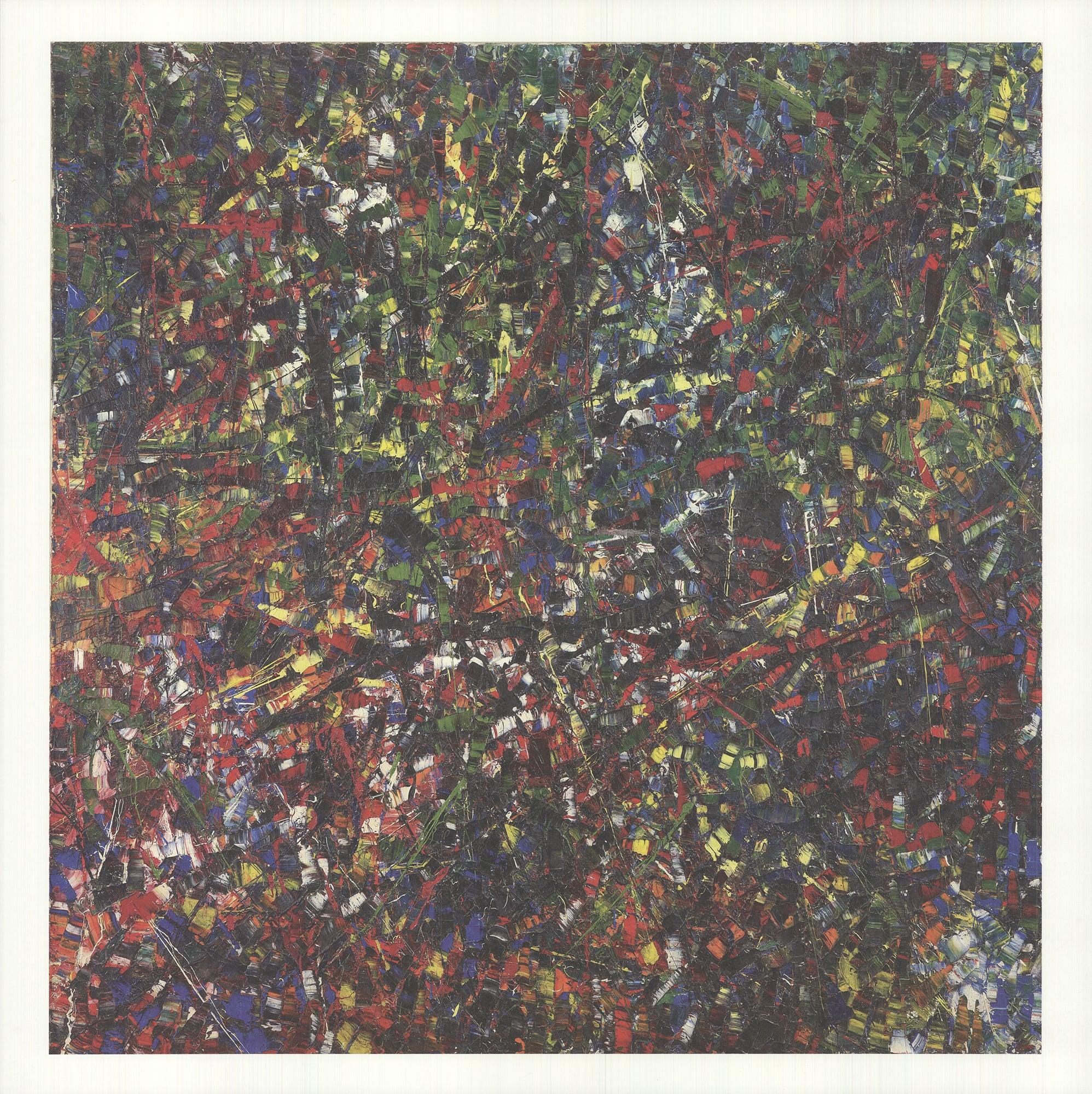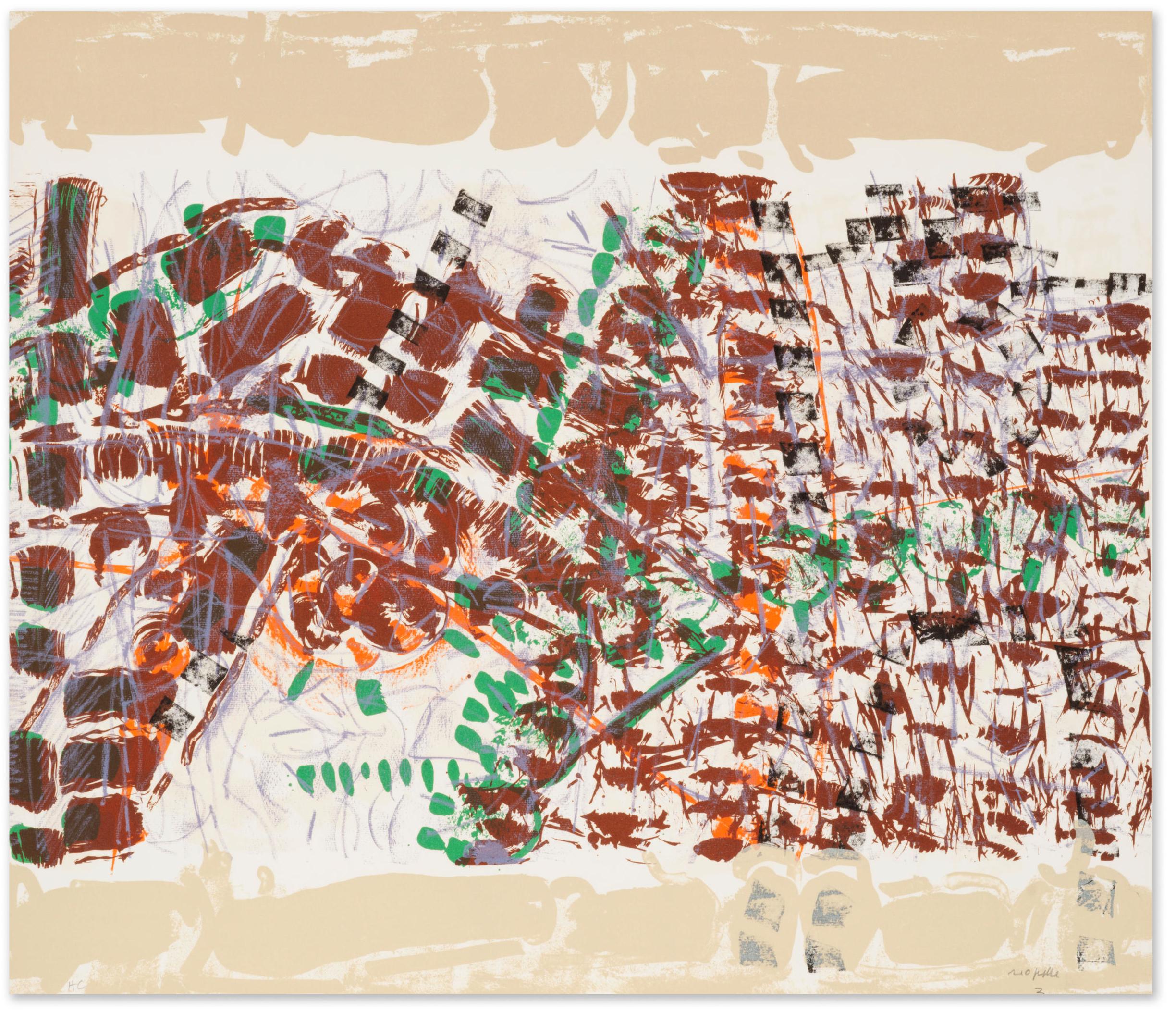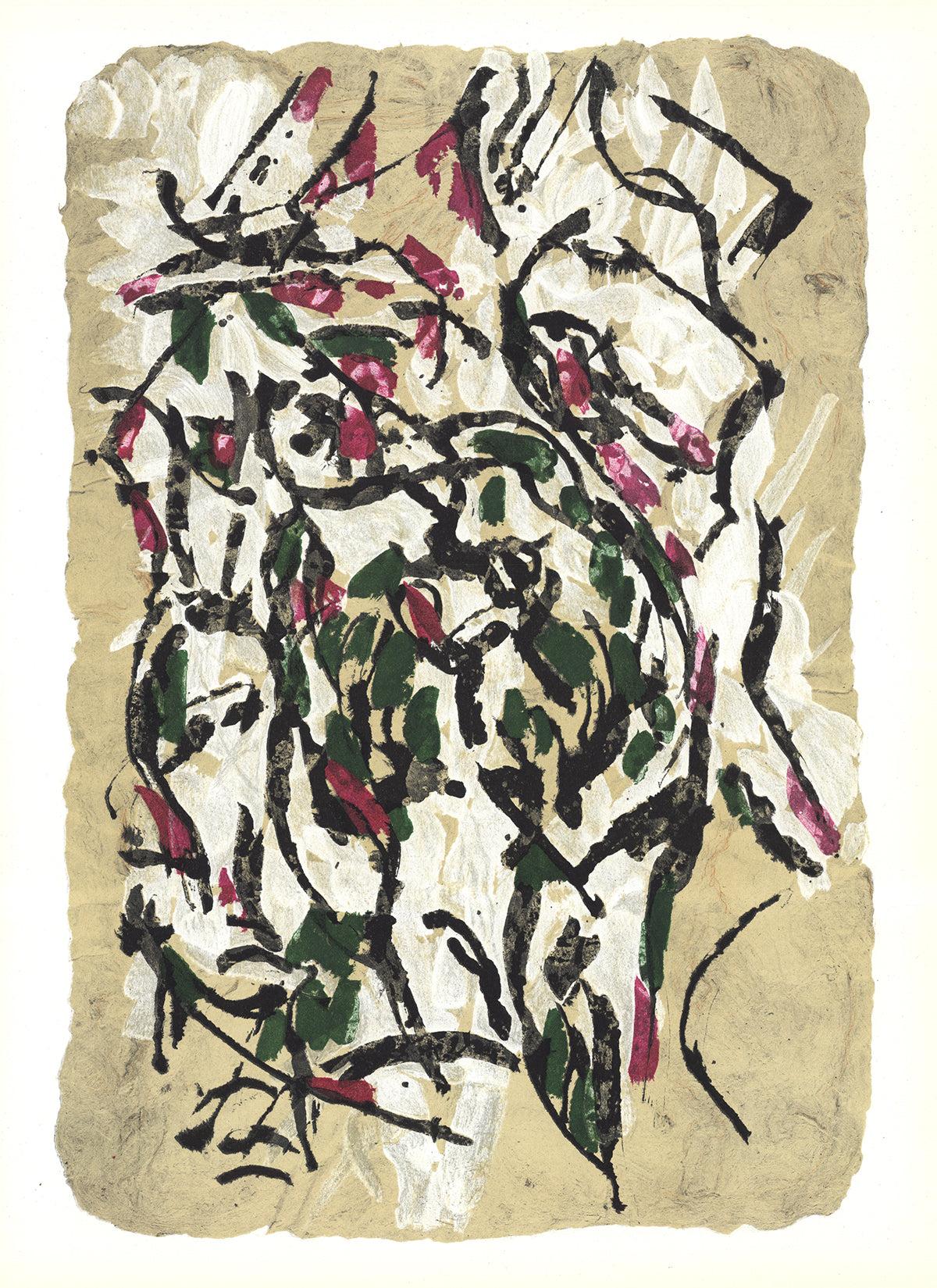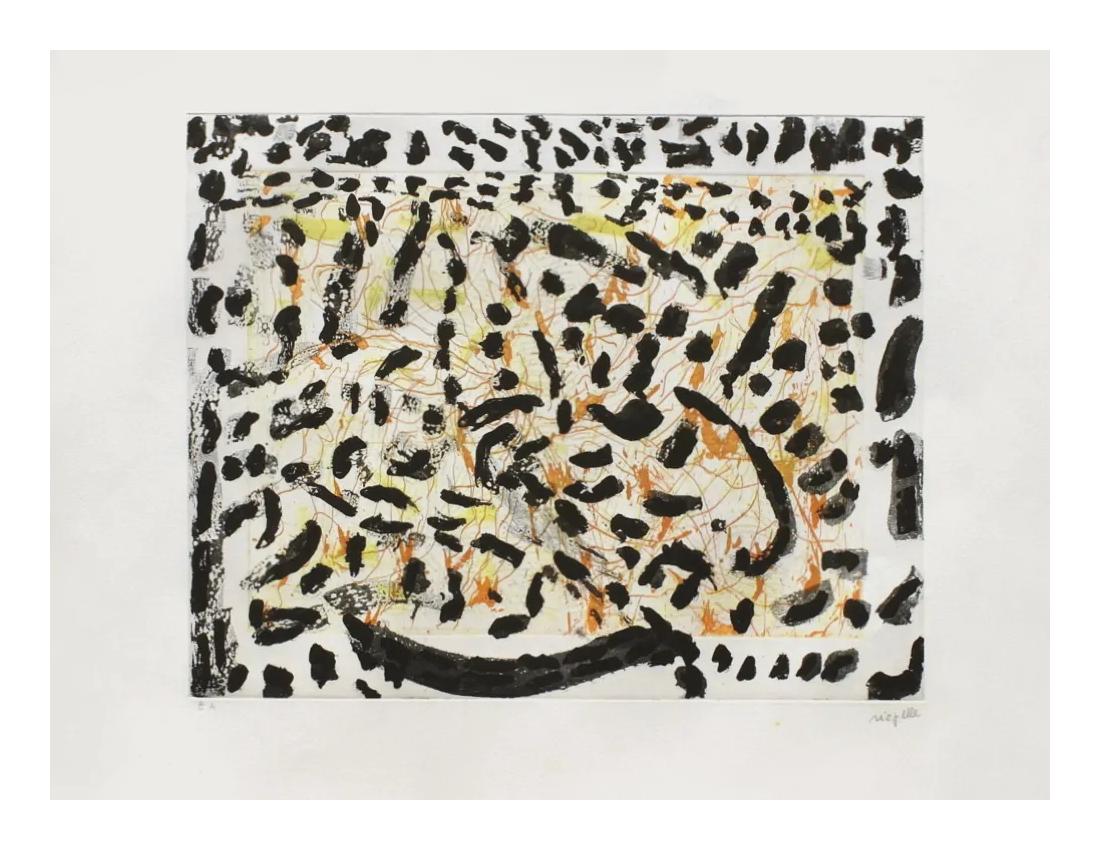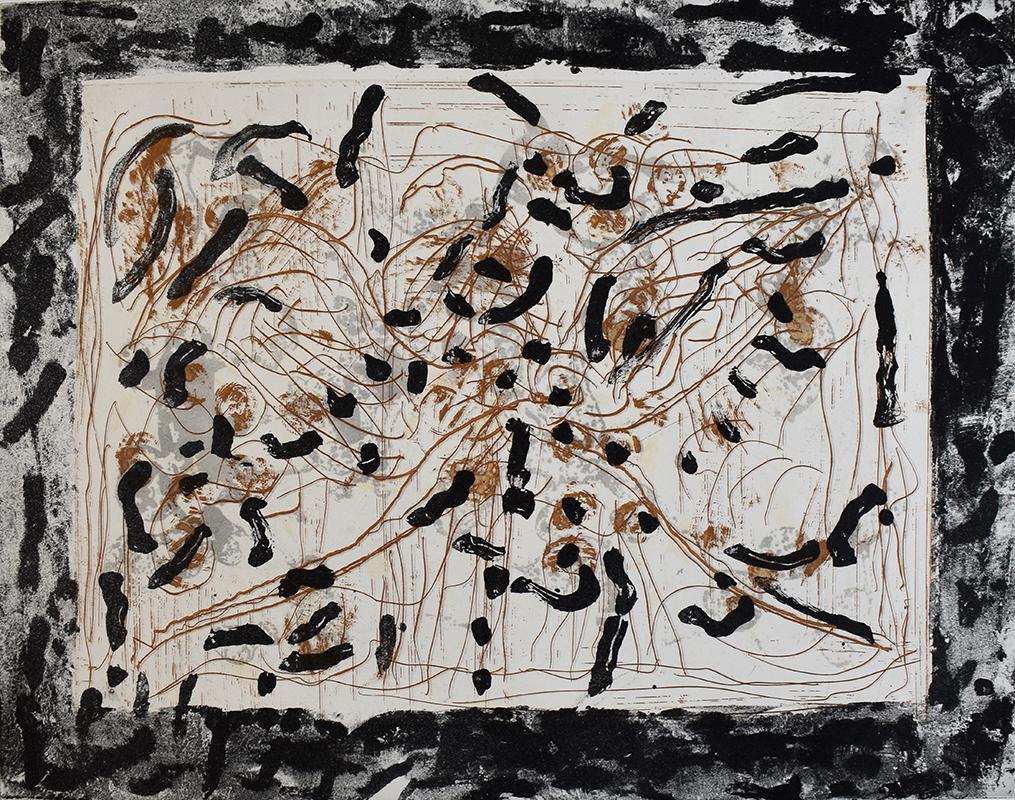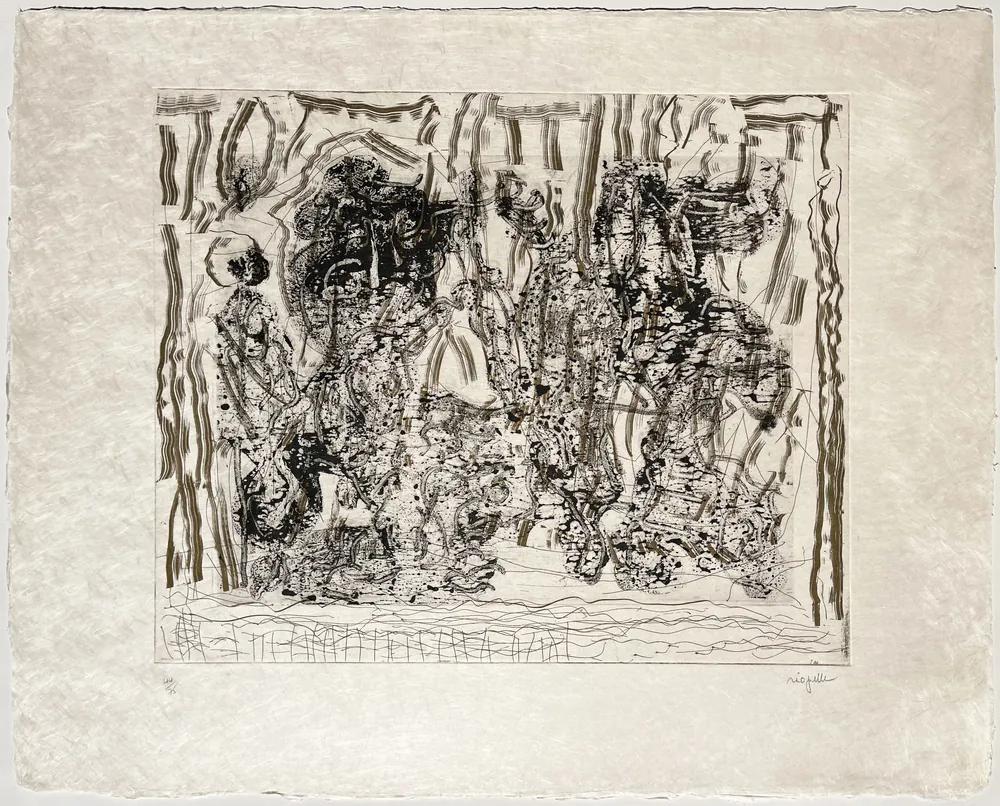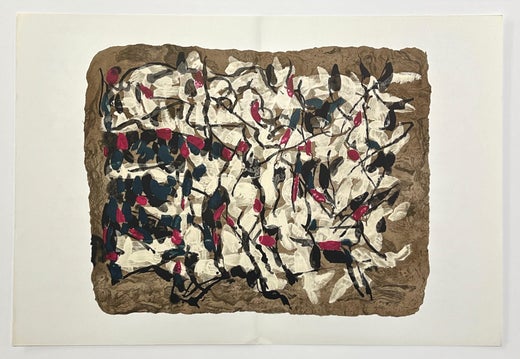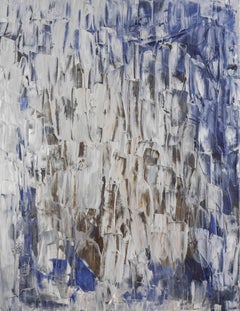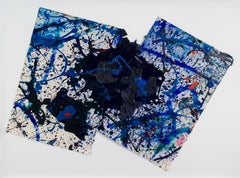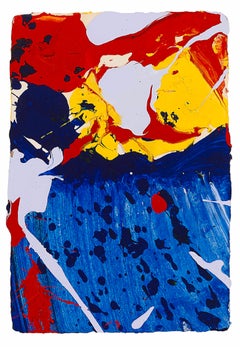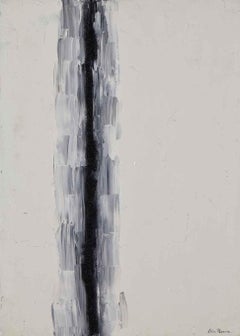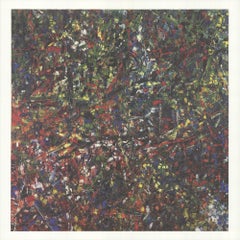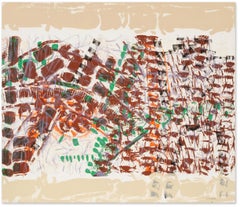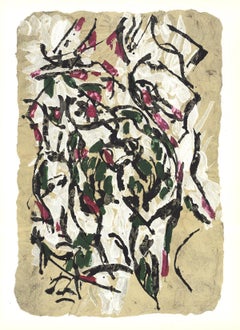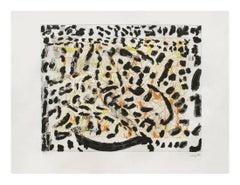Items Similar to F. AC (Ficelle AC Bris by JEAN-PAUL RIOPELLE - Canadian artist, 20th century art
Want more images or videos?
Request additional images or videos from the seller
1 of 6
Jean-Paul RiopelleF. AC (Ficelle AC Bris by JEAN-PAUL RIOPELLE - Canadian artist, 20th century art1972
1972
$49,810.90
£36,000
€42,459.61
CA$68,918.56
A$74,780.11
CHF 39,669.45
MX$918,293.88
NOK 490,582.30
SEK 464,580.86
DKK 316,943.34
About the Item
F. AC (Ficelle AC Bristol) by JEAN-PAUL RIOPELLE (1923-2002)
Acrylic on paper laid down on canvas
89.7 x 49.5 cm (35 1⁄4 x 19 1⁄2 inches)
Signed with initial lower right, R and titled, AC (Abstract Composition) N
Executed in 1972
Provenance
Christie's, London, 1st July 1999 Galerie Roche, Bremen, Germany Kaspar Gallery, Toronto, Canada Private collection, Italy
Literature: Yseult Riopelle and Tanguy Riopelle, Jean-Paul Riopelle, Tome 5, 1972 – 1979, Catalogue Raisonné, cat. no. 1972.027P.1972, p. 305, illustrated in colour
Exhibition: Zürich, Galerie Maeght, Riopelle, peintures acryliques, gouaches, sculptures, cat. no. 39, 1972 (reproduction error)
Paris, Centre culturel canadien et Musée d'art moderne, Riopelle, ficelles et autres jeux, cat. no. 76, 1972
Artist biography
Jean-Paul Riopelle was born in Montreal, Quebec, Canada, 7 October 1923. He began his career at the école polytechnique in 1941, pursuing engineering with some architecture and photography. His childhood enthusiasm for making art became a hobby at this time, and he described himself as a Sunday painter with a constrained, academic style.
In 1942 he enrolled at the école des Beaux-Arts in Montreal but shifted his studies to the much less academic approach at the école du Meuble, graduating in 1945. There he studied with Paul-émile Borduas, a teacher who was extremely dedicated to his students and gave them a great deal of freedom. It was under Borduas's direction that Riopelle made his first abstract painting. From 1942-45, Borduas and several of his students, including Riopelle, formed a group that worked, socialized and exhibited together. The group became known as the Automatistes for their spontaneous method of painting, which drew on the subconscious as a source. In 1946, Riopelle first travelled to France, where he would return and settle the following year. Borduas authored the manifesto Refus global in 1948, which was signed by a number of his students, including Riopelle. Riopelle had his first solo exhibition at the Surrealist meeting place, Galerie La Dragonne in Paris, in 1949. During the late 1940s and early 1950s, he met and became friends with artists, writers and gallery owners including Georges Mathieu and Pierre Loeb, who introduced him to André Breton. He also met Jean Arp and Antonin Artaud at Loeb's gallery.
The coming years brought Riopelle increasing success and immersion in the Parisian cultural scene. He was represented in New York and participated in the biennials of contemporary art in Venice (1954) and Sao Paulo (1955). He spent his evenings in Paris bistros with friends including playwright Samuel Beckett and artist Alberto Giacometti. In such works as Pavane (1954) and The Wheel II (1956), Riopelle pioneered a style of painting where large quantities of varied coloured paints were thickly applied to the canvas with a trowel or palette knife. Seeking to express a “mental landscape, the result of his relations with reality”, these works of lyrical abstraction show the influence of surrealism and Riopelle’s free-flowing subconscious. Spanning approximately 8 by 10 feet, The Wheel II is composed of vibrant geometric slabs of paint laid down by a palette knife, which fan out in concentric patterns and amass in a spontaneous mosaic of colour.
Of his method, Riopelle said, “Because there are no longer any widely accepted symbols, another type of relationship is necessary. For me, this is the contact with nature. The contact with nature requires documentation… for me, to create, the simplest is to draw and to gather material from nature… “ In the 1960s, Riopelle renewed his ties to Canada. Exhibitions were held at the National Gallery of Canada (1963), and the Musée du Quebec held a retrospective in 1967. In the early 1970s, he built a home and studio in the Laurentians. From 1974 he divided his time between St. Marguerite in Quebec, and Saint-Cyr-en-Arthies in France. Riopelle participated in his last exhibition in 1996. From 1994 until his death, 12 March 2002, he maintained homes in both St. Marguerite and Isle-aux-Grues, Quebec.
- Creator:Jean-Paul Riopelle (1923-2002, Canadian)
- Creation Year:1972
- Dimensions:Height: 35.32 in (89.7 cm)Width: 19.49 in (49.5 cm)
- Medium:
- Movement & Style:
- Period:
- Condition:
- Gallery Location:London, GB
- Reference Number:1stDibs: LU261210090662
Jean-Paul Riopelle
Jean-Paul Riopelle (1923 – 2002) was a painter and sculptor from Quebec, Canada. He became the first Canadian painter (since James Wilson Morrice) to attain widespread international recognition. Born in Montreal, Riopelle began drawing lessons in 1933 and continued through 1938. He studied engineering, architecture and photography at the ecole polytechnique in 1941. In 1942 he enrolled at the Ecole des Beaux-Arts de Montreal but shifted his studies to the less academic Ecole du Meuble, graduating in 1945. He studied under Paul-Emile Borduas in the 1940s and was a member of Les Automatistes movement. Breaking with traditional conventions in 1945 after reading Andre Breton's Le Surrealisme et la Peinture, he began experimenting with non-objective (or non-representational) painting. He was one of the signers of the Refus global manifesto. In 1947 Riopelle moved to Paris and continued his career as an artist, where, after a brief association with the surrealists (he was the only Canadian to exhibit with them) he capitalized on his image as a "wild Canadian". His first solo exhibition took place in 1949 at the Surrealist meeting place, Galerie La Dragonne in Paris. In 1959 he began a relationship with the American painter Joan Mitchell. Living together throughout the 1960s, they kept separate homes and studios near Giverny, where Monet had lived. They influenced one another greatly, as much intellectually as artistically, but their relationship was a stormy one, fueled by alcohol. The relationship ended in 1979. His 1992 painting Hommage a Rosa Luxemburg is Riopelle's tribute to Mitchell, who died that year, and is regarded as a high point of his later work. Riopelle's style in the 1940s changed quickly from Surrealism to Lyrical Abstraction (related to abstract expressionism), in which he used myriad tumultuous cubes and triangles of multicolored elements, facetted with a palette knife, spatula, or trowel, on often large canvases to create powerful atmospheres. The presence of long filaments of paint in his painting from 1948 through the early 1950s has often been seen as resulting from a dripping technique like that of Jackson Pollock. Rather, the creation of such effects came from the act of throwing, with a palette knife or brush, large quantities of paint onto the stretched canvas (positioned vertically). Riopelle's voluminous impasto became just as important as color. Riopelle was arguably one of the most important Canadian artists of the 20th century, establishing his reputation in the burgeoning postwar art scene of Paris, where his entourage included Andre Breton, Sam Francis and Samuel Beckett. Riopelle produced over six thousand works (of which he produced more than two thousand paintings) during the course of his lifetime.
About the Seller
5.0
Recognized Seller
These prestigious sellers are industry leaders and represent the highest echelon for item quality and design.
Gold Seller
Premium sellers maintaining a 4.3+ rating and 24-hour response times
Established in 1964
1stDibs seller since 2015
104 sales on 1stDibs
Typical response time: 2 hours
Associations
Society Of London Art Dealers
- ShippingRetrieving quote...Shipping from: London, United Kingdom
- Return Policy
Authenticity Guarantee
In the unlikely event there’s an issue with an item’s authenticity, contact us within 1 year for a full refund. DetailsMoney-Back Guarantee
If your item is not as described, is damaged in transit, or does not arrive, contact us within 7 days for a full refund. Details24-Hour Cancellation
You have a 24-hour grace period in which to reconsider your purchase, with no questions asked.Vetted Professional Sellers
Our world-class sellers must adhere to strict standards for service and quality, maintaining the integrity of our listings.Price-Match Guarantee
If you find that a seller listed the same item for a lower price elsewhere, we’ll match it.Trusted Global Delivery
Our best-in-class carrier network provides specialized shipping options worldwide, including custom delivery.More From This Seller
View AllLiberté Interdite by Lélia Pissarro - Abstract painting by contemporary artist
By Lelia Pissarro
Located in London, GB
Liberté Interdite by LÉLIA PISSARRO (b. 1963)
Acrylic on canvas
115.5 x 85.5 cm (45 1⁄2 x 33 5⁄8 inches)
Signed lower right, Lélia Pissarro
Signed Lélia Pissarro and titled Liberté I...
Category
Early 2000s Abstract Abstract Paintings
Materials
Silver
Composition by Sam Francis - Abstract, mixed media
By Sam Francis
Located in London, GB
*PLEASE NOTE UK BUYERS WILL ONLY PAY 5% VAT ON THIS PURCHASE.
Composition by Sam Francis (1923-1994)
Acrylic and paper collage on paper
57.2 x 81.3 cm (22 ¹/₂ x 32 inches)
Stamped o...
Category
1990s Abstract Mixed Media
Materials
Paper, Acrylic
Sklye by Sam Francis - Painting, Acrylic, Abstract Art
By Sam Francis
Located in London, GB
*PLEASE NOTE UK BUYERS WILL ONLY PAY 5% VAT ON THIS PURCHASE.
Sklye by Sam Francis (1923-1994)
Acrylic on paper
14.6 x 10.2 cm (5 ³/₄ x 4 inches)
Signed, Sam Francis and dated on th...
Category
1980s Abstract Drawings and Watercolor Paintings
Materials
Paper, Acrylic
Audace by Lélia Pissarro - Oil and Glitter on Canvas Painting
By Lelia Pissarro
Located in London, GB
Audace by Lélia Pissarro (B. 1963)
Oil and glitter on canvas
55.8 x 40.6 cm (22 x 16 inches)
Signed lower right, Lélia Pissarro
Signed Lélia Pissarro and titled Audace on the reverse...
Category
Early 2000s Abstract Abstract Paintings
Materials
Canvas, Oil Pastel, Glitter
Composition by Arikha Avigdor - Post-war and Contemporary gouache, c. 1955
Located in London, GB
Composition by Arikha Avigdor (1929-2010)
Gouache on paper
39 x 75 cm (15 ³/₈ x 29 ¹/₂ inches)
Signed lower right
Executed circa 1955
This work is an fine example of the Avigdor’s a...
Category
1950s Contemporary Abstract Drawings and Watercolors
Materials
Paper, Gouache
And Lia by LÉLIA PISSARRO - Contemporary Art, Abstract, Painting, Acrylic
By Lelia Pissarro
Located in London, GB
And Lia by LÉLIA PISSARRO (b. 1963)
Acrylic and gold powder on canvas
100 x 70 cm (39 ¼ x 27 ½ inches)
Signed lower left, Lélia Pissarro
Titled on the reverse “And Lia”, signed Lélia...
Category
Early 2000s Abstract Abstract Paintings
Materials
Acrylic
You May Also Like
Jean-Paul Riopelle 'Sans Titre, 1954' 2023- Vintage
By Jean-Paul Riopelle
Located in Brooklyn, NY
This limited edition reproduction captures an untitled painting originally created by Jean Paul Riopelle in 1954. Published in France and printed on heavy stock paper, this piece off...
Category
2010s Contemporary Prints and Multiples
Materials
Offset
Midi, Planche de la série "Le Sablier"
By Jean-Paul Riopelle
Located in Westmount, QC
Jean-Paul Riopelle, 1923-2002, Canadian
Midi, Planche de la série "Le Sablier", 1978-1979
Lithograph
22 x 25.5 in
56 x 65 cm
Inscriptions
Proof “HC” signed, and annotated “3” in penc...
Category
Late 20th Century Abstract Abstract Prints
Materials
Lithograph
Jean-Paul Riopelle 'Sans Titre 160-2' 1966- Lithograph
By Jean-Paul Riopelle
Located in Brooklyn, NY
Paper Size: 15 x 11 inches ( 38.1 x 27.94 cm )
Image Size: 15 x 11 inches ( 38.1 x 27.94 cm )
Framed: No
Condition: A-: Near Mint, very light signs of handling
Additional Details: U...
Category
1960s Abstract Impressionist Prints and Multiples
Materials
Lithograph
$60 Sale Price
20% Off
Les Mouches à Marier n3
By Jean-Paul Riopelle
Located in Westmount, QC
Jean-Paul Riopelle, 1923-2002, Canadian
untitled, from the portfolio «Les Mouches à Marier» , n3 1985
Etching
19 1/2 x 26 in
50 x 66,3 cm (papier); 38 x 47,5 cm (image)
Signed lowe...
Category
Late 20th Century Abstract Abstract Prints
Materials
Lithograph
Composition I, from: Marrying Flies Les mouches à marier - Canadian
By Jean-Paul Riopelle
Located in London, GB
This work is hand signed in pencil by the artist "Riopelle" at the lower right corner.
It is also hand inscribed in pencil "EA" (épreuve d’artiste), at the lower left corner.
This i...
Category
1980s More Prints
Materials
Etching, Aquatint
Autres mouches no 1
By Jean-Paul Riopelle
Located in Westmount, QC
Jean-Paul Riopelle, 1923-2002, Canadian
Autres mouches no 1, 1985
Lithograph on Japan paper
20 1/2 x 26 3/4 in
Signed and numbered in pencil, edition of 75
Catalogue raisonné refer...
Category
Late 20th Century Abstract Abstract Prints
Materials
Lithograph
More Ways To Browse
Paintings Early 20th Century Venice
German Early 20th Century Expressionist Painting
Canadian Art 20th Century
Canadian Landscape Artists Early 20th Century
Pioneer Paintings
Canadian Artists Painting
Samuel Beckett
Antonin Artaud
Canadian Abstract Artists
5 Feet By 7 Feet Painting
Paris Bistro
Abstract Geometric Painting Mid Century
Havana Cuba
Ontario Canada
American Modernist Paintings
Nature Abstract Paintings
Pastels On Canvas
Buffalo Art
